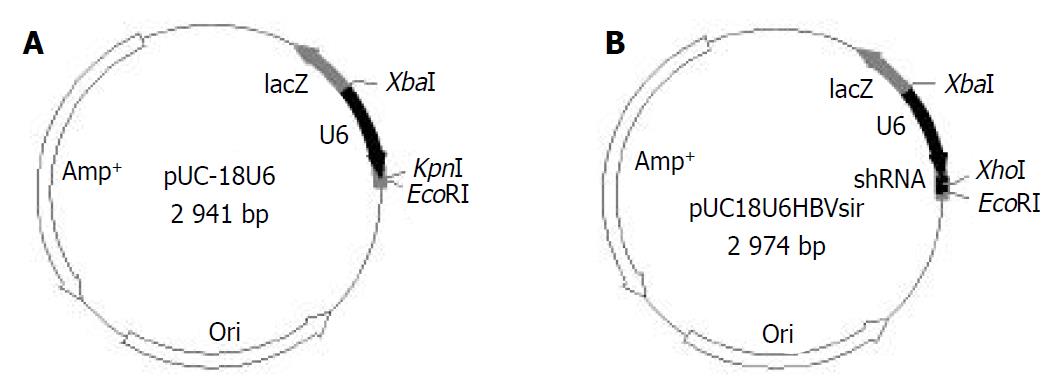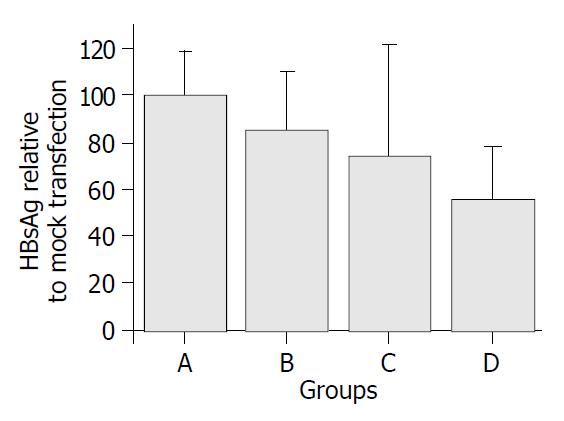Copyright
©The Author(s) 2004.
World J Gastroenterol. Jul 1, 2004; 10(13): 1898-1901
Published online Jul 1, 2004. doi: 10.3748/wjg.v10.i13.1898
Published online Jul 1, 2004. doi: 10.3748/wjg.v10.i13.1898
Figure 1 Construction of mammalian siRNA expression vector pUC18U6 and HBV-siRNA expression vector pUC18U6HBVsir.
A: Amplification of human U6 promoter by PCR. 1: DNA marker (2000, 1000, 750, 500, 250, 100 bp from top to bottom); 2: PCR product. B: Restriction digestion analysis of recombinant vector pUC18U6. 1: pUC18; 2: pUC18U6; 3: DNA marker (2000, 1000, 750, 500, 250, 100 bp from top to bottom). C: Restriction digestion analysis of recombinant vector pUC18U6HBVsir. 1: pUC18U6HBVsir; 2: pUC18; 3: DNA marker (2000, 1000, 750, 500, 250, 100 bp from top to bottom).
Figure 2 Maps of pUC18U6 and pUC18U6HBVsir.
A: pUC18U6. B: pUC18U6HBVsir.
Figure 3 HBsAg concentrations in supernatants of transfected 2.
2.15 cells. Groups A-D represent mock-transfected 2.2.15 cells or 2.2.15 cells transfected by pUC18U6, pUC18U6GFPsir and pUC18U6HBVsir, respectively. The concentration of HBsAg in the supernatant of 2.2.15 cells transfected by pUC18U6HBVsir was decreased by 44% as compared with that of mock-trans-fected 2.2.15 cells.
- Citation: Liu J, Guo Y, Xue CF, Li YH, Huang YX, Ding J, Gong WD, Zhao Y. Effect of vector-expressed siRNA on HBV replication in hepatoblastoma cells. World J Gastroenterol 2004; 10(13): 1898-1901
- URL: https://www.wjgnet.com/1007-9327/full/v10/i13/1898.htm
- DOI: https://dx.doi.org/10.3748/wjg.v10.i13.1898















